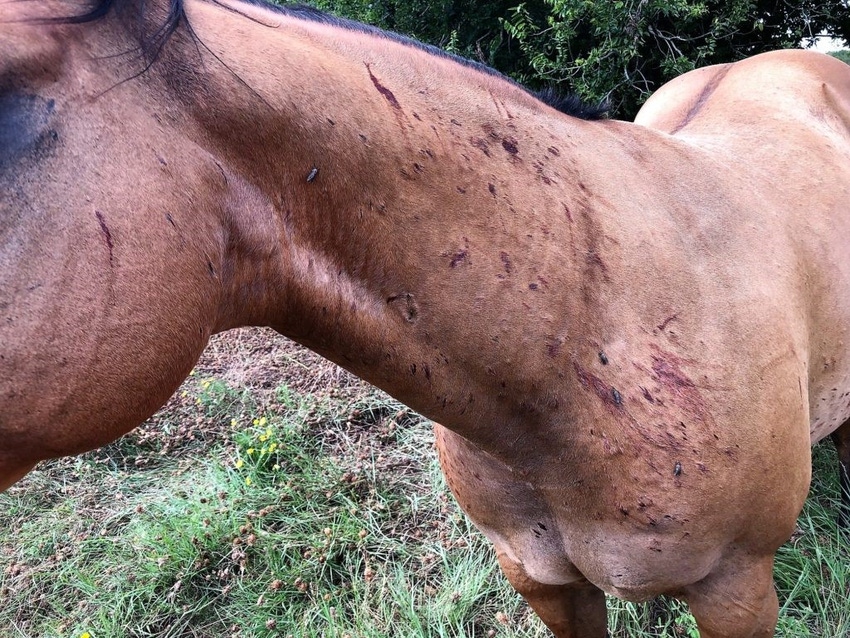Horse fly population higher than normal, hard to control
Texas reporting record-setting infestations of difficult-to-control horse flies, which can spread diseases such as anthrax.
August 14, 2019

High populations of horse flies, a stubborn and difficult-to-control biting fly, have caused problems for Texas livestock producers this year, Texas A&M AgriLife Extension Service entomologist Dr. Sonja Swiger said.
Swiger said reports of horse fly infestations are higher than she has ever experienced during her 11-year career.
“It’s the worst year I’ve seen,” she said. “We don’t have much data on seasonal horse fly populations to compare, but we can speculate that all the rain we’ve had the last few years has created the right environmental conditions for higher horse fly numbers.”
Swiger said the numbers should begin to wane because temperatures have risen to more inhospitable levels. However, the pest can resurge with later-summer rains or in the fall.
Despite the name, horse flies are not host specific and will feed on opportune human and animal hosts, she said.
Like mosquitoes, only female horse flies bite, because they need the host’s blood for egg production, Swiger said. Unlike mosquitoes, though, horse flies cut the host and consume blood as it drips from the wound.
Horse flies only bite and feed once a day, she noted.
Swiger said horse flies typically stay in shaded areas, such as along tree lines. They consume carbohydrates like nectars and honeydew, but females will leave their cover to hunt for hosts once a day.
Horse flies typically lay eggs over winter and in early spring in shady, semi-aquatic to moist areas, including around the edges of ponds or water tanks, she said.
“They can be in any number of locations, and that makes them hard to treat effectively,” she said. “The larvae are maggots, but they look like maggots on steroids. They are also very predacious and will feed on each other.”
Control options
According to Swiger, controlling horse flies is difficult, but a few things can help reduce numbers and relieve animal bites.
There are no data available focused on the effectiveness of pours designed to curtail horse flies, Swiger said, noting that pyrethroid — especially synthetic pyrethroid-based pours — have been shown to provide temporary relief. She added that most synthetic pyrethroid products are not labeled for horses.
“There’s just not much labeled for horses, and even on cattle, those chemicals don’t do much to deter horse flies,” she said. “Permethrins may work, but again, it’s going to be limited relief.”
The best defense for horses is to move them from the infested area into a barn or to cover them with lightweight summer sheets designed to stop biting flies and mosquitoes, she said.
Traps specifically designed for horse flies can reduce numbers in infested areas, Swiger said.
“They are visual hunters, so many traps look like a black ball, which mimics the belly of an animal,” she said. “We trapped 350 horseflies and 200 deerflies over a 10-week period in two counties for a study. So, they do work. We just don’t have enough data yet to say how effective they are.”
Swiger noted another concern about higher-than-normal horse fly numbers: anthrax. The species are known vectors of the disease, but the extent of their role in spreading the disease is unknown.
Horse flies have a maximum range similar to most flies of about 5-10 miles, although most fly populations remain relatively close to the breeding ground where they emerged, she said.
“We don’t expect horse flies to spread the disease outside the affected area. It’s just something worth noting because there have been so many cases of anthrax this year,” she said. “We can’t confirm that it’s related to the above-average horse fly populations, but it’s certainly possible and something we want to learn more about.”
You May Also Like



